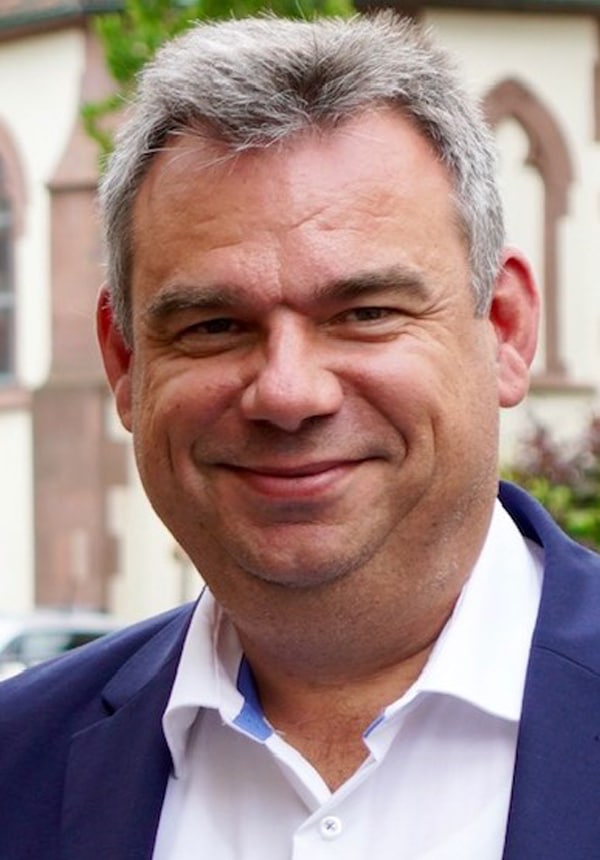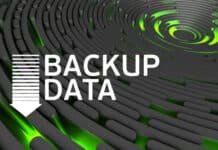The Document Foundation (TDF) is actively looking for volunteers in India who wish to contribute to this community. At Open Source India last October, Lothar Karl Becker, member and former chairman, The Document Foundation, spoke to OSFY’s Yashasvini Razdan about the role of open source projects in creating cost savings for businesses.
Q. What is the LibreOffice project and what role does The Document Foundation play in it?
A. The LibreOffice project follows a life cycle and plan for our software releases, issuing new versions of our office productivity software twice a year. Around these biannual releases, various tasks must be completed. Developments are integrated into the core software, and quality assurance is organised.

The Document Foundation (TDF) certifies its ecosystem partners for good services in training, migration, and development while transitioning from another office productivity suite to LibreOffice. TDF staff and project volunteers collaborate on these tasks, requiring careful coordination. Each major version triggers diverse marketing activities, such as video production and information dissemination about new features. Additionally, new languages are translated for the user interface (UI) and help documentation. TDF orchestrates all LibreOffice-related tasks by handling contributions to the ongoing development and enhancement of the software.
Q. How important is India for The Document Foundation?
A. We are increasingly ramping up our activities in India. We have observed a discrepancy in our community base, particularly between India’s role in open source and its significant contribution to the community of TDF or the LibreOffice project. It is not just about TDF; it is about the LibreOffice project as a whole. Consequently, we have decided to concentrate some of our efforts on India, including marketing and awareness-raising activities, to expand our community base here, similar to what we have seen in other open source projects.
Q. What is the significance of the community in this project?
A. The community is at the heart of our office software. The community consists of three key parts — the users who utilise our software, volunteers, and the ecosystem of companies who earn revenue from LibreOffice through added value services. The large number of users forms the foundation of our community. Without the vast user base, the software would have no relevance. The volunteers contribute in their free time, some receiving support from their companies to assist with LibreOffice. A few staff members from TDF are also part of this volunteering community. Companies in the ecosystem contribute back to the project through code development, or new features. If their code gets committed to LibreOffice, it’s integrated into the core software and becomes open source, albeit customer-funded.
Q. What role do open source organisations like TDF play in the entire ecosystem?
A. There are many instances of companies and projects starting in the open source domain and then transitioning to a closed source model. A prominent example is ChatGPT from OpenAI, which was acquired by Microsoft and has since become closed source. This risk is mitigated by the Foundation, as the Foundation itself cannot be purchased by another company. The statutes of the Foundation dictate that everything it delivers and supports must benefit the users. TDF is committed to ensuring that the software remains open source indefinitely, upholding the principles of equality and accessibility. While this doesn’t necessarily mean the software is always free, it should be low-cost for users. These rules and principles within the Foundation’s statutes are designed to safeguard against the risks observed in other organisations and projects. This commitment to maintaining open source integrity and user accessibility is a fundamental rule.
Q. Is it a good business model to start with open source and later make it closed source?
A. Transitioning from an open source model to closed source doesn’t work well. We have seen instances, such as with Oracle and Apache regarding OpenOffice, where such attempts were made. The essence of open source lies in the freedom to work with the code and, if necessary, take that code and start independent activities with it. In the case of ChatGPT, if I disagree with the move to closed source, I have the right to take the existing open source code version and pursue my own open source projects. This is exactly what happened with LibreOffice. When faced with the prospect of Open Office taking a different direction, the community took the source code and said, “We will now organise our own open source project under our own brand.” The risk for those who shift from open source to closed source is that another part of the community may take the existing open source code and continue its development independently, creating a competitive situation. This dynamic is what makes the open source model particularly resilient and, in my view, a sound business approach for ecosystem partners.
Q. What kind of challenges do businesses that transition from an open source model to a closed source model face?
A. All business around open source is, and always will be, fundamentally influenced by the fact that the source code is freely available. Anyone can take this open source code and use it in their projects, adhering to the specific licence terms. Transforming open source into closed source for the purpose of charging licensing fees or usage fees isn’t a practical approach. The software is already freely available in the open source domain, making such a business model ineffective. This is exemplified by the case of Star Office and Sun Microsystems, which transitioned from closed source to open source. Once this transition occurred, it was clear that no one would be successful in charging fees for the pure Star Office licence, for instance. This serves as a prime example of why simply taking code, making it closed source, and then charging for it isn’t the best strategy. However, if the business model involves selling added value services around the software, then it makes sense and could potentially be a viable business case. It is about providing additional, valuable services or enhancements to the open source software, not just repackaging the freely available code and charging for it.
Q. How are companies able to maintain their competitive edge through open source?
A. To stay competitive, companies need to distinguish between collaborative and independent tasks. Development tasks, involving coding, often lead to companies seeking skilled developers from others, benefiting from their expertise. Conversely, someone may have different strengths, such as marketing. Collaboration enlarges the ‘cake’, offering a larger slice for everyone. Aspects such as marketing and branding are suited for individual handling, integral to a company’s identity and strategy. While some tasks can be outsourced or collaboratively managed, critical areas, especially customer liability, demand company control. Liability guides in-house task determination, ensuring reliable and accountable delivery to customers. Internally managing responsibilities is vital for quality and trust. Balancing collaborative and independent work is crucial for a competitive edge, leveraging open source community strengths.
Q. Do you think everything should be open sourced?
A. In specific situations, things should be open sourced, especially if a project is funded by taxpayers’ money. The source should be open if it’s financed by the public, allowing taxpayers access. Even if not everyone can use it directly, provisions should enable inspection and use for the greater good. However, in some sectors, particularly those involving defence, the decision to go open source needs careful consideration. Projects related to the military or sensitive fields might require more closed approaches. In such cases, the benefits of openness need balancing against potential risks and security concerns.
Q. What about open sourcing in critical systems? Is it questionable?
A. No, it’s not questionable for critical systems; ideally, critical infrastructure should be open source. Openness allows greater visibility into software, facilitating quicker bug identification and fixes. Open sourcing enhances security and reliability through scrutiny and improvement by a large developer community, ensuring no hidden vulnerabilities and enabling timely updates. However, in specific areas like military services, maintaining closed source may be justified for defence reasons. Apart from such cases, most areas, especially critical infrastructure, benefit significantly from being open source. Much critical infrastructure, including Linux server systems, follows this approach for transparency, security, and community-driven oversight, crucial for robust systems.
Q. How have open source projects impacted cost savings in a company?
A. One of the most significant cost savings for a company engaged with an open source product is the ability to leverage innovations from outside their immediate corporate circle. People who examine the software or code, might think of a new angle for a feature or improvement, which is then contributed back to the project. This external contribution allows a company to integrate new features into their product and offer them to their customers. The key benefit here is innovation. By leveraging open source, a company can reduce development costs, save time, and innovate in a much shorter cycle, making it one of the most tangible benefits of engaging with open source projects.
Q. How does one determine which licence sits well with a particular open source software?
A. The choice of licence depends on the business model and the intended use of the software. Each licence has its own terms and conditions, catering to different requirements and objectives. If you have a specific licensing agreement in mind, it’s crucial to thoroughly understand the nuances of that licence, as there are many variations, and each serves a different purpose. At The Document Foundation, we use Mozilla and GNU General Public Licence (GPL) and cannot opt for some different licence without violating our own statutes.
Q. As an industry expert, how would you advise someone on choosing licences?
A. Understanding the mindset behind open source is crucial for selecting an appropriate licence. The less open the source, the tougher the licence. Many arguments in favour of open source align with business practices. Most queries about open source centre around adapting business models within this framework. Despite the variety of licences available, numerous businesses thrive under strict, Open Source Initiative (OSI)-approved licences by delivering added value rather than relying solely on licensing fees for revenue. The Document Foundation adds value to finance activities without compromising dedication to the open source ethos.
When advising on licence selection, consider the primary revenue generation goal. I advocate a business model that emphasises authenticity and open source commitment. Choose a licence that fully supports open source ideals, to avoid dilution and move towards a model that upholds transparency and the core values of open source.
Q. What do you mean by ‘the less open the source, the tougher the licence is’?
A. What I mean is that the closer you adhere to the Four Freedoms of open source – the freedom to run, study, distribute, and modify the software – the more aligned with open source principles you are. If your licence restricts any of these Four Freedoms, you are moving away from the core ethos of open source. Essentially, the more open-minded you are towards these freedoms, the more open your licence is. This has interesting implications for organisations, especially in terms of cost savings. The difference lies between an organisation like TDF, which focuses on public good, and commercial companies. TDF, for instance, doesn’t aim to earn profits but relies on donations and similar forms of support. In contrast, commercial entities might approach open source differently, balancing the principles of open source with their business models.
Q. At what point does TDF get associated with a project done by an external entity?
A. TDF comes into the picture when contributions become a part of the open source project. While there may be activities external to TDF, we are comfortable with them as long as they do not fall under the brand of LibreOffice or TDF. Contributors have the freedom of open source to pursue their own projects independently. TDF’s role becomes prominent while orchestrating specific aspects, such as quality assurance, when contributions are integrated into the core of LibreOffice or when an event is organised under the banner of LibreOffice or TDF. At these junctures, it’s essential for the Foundation to exercise a level of control over what is done and the quality of the work produced.
Q. What challenges do organisations like TDF face, and how do you resolve them?
A. The primary challenge for a foundation is the potential loss of contributions, which are its lifeblood. Operating without a traditional business model and not developing software internally, all development comes from external contributors. Losing ecosystem partners or volunteers significantly diminishes the foundation’s relevance. TDF has staff members who need compensation, requiring a steady flow of donations. To counter these challenges, TDF actively seeks donations, particularly from professional software users. The Foundation also focuses on acquiring new members and growing the community for sustainability. TDF closely monitors operational health, including contributions, community involvement, and donations. Monitoring is vital because if these sources cease, the Foundation would be more or less dead.
Q. Did you achieve what you came to Open Source India for? How was your experience here?
A. My goal at Open Source India was to expand the LibreOffice community in India. I’m pleased to find active contributors here. The event has seen daily active participation from many people, which is commendable. My experience has been perfect, the location excellent, and attending worthwhile. The response to my session was encouraging, with many showing interest, so I believe I have achieved my goal. I’m expecting a lot of follow-up engagement. So, yes, I believe my visit has been successful and productive.










































































